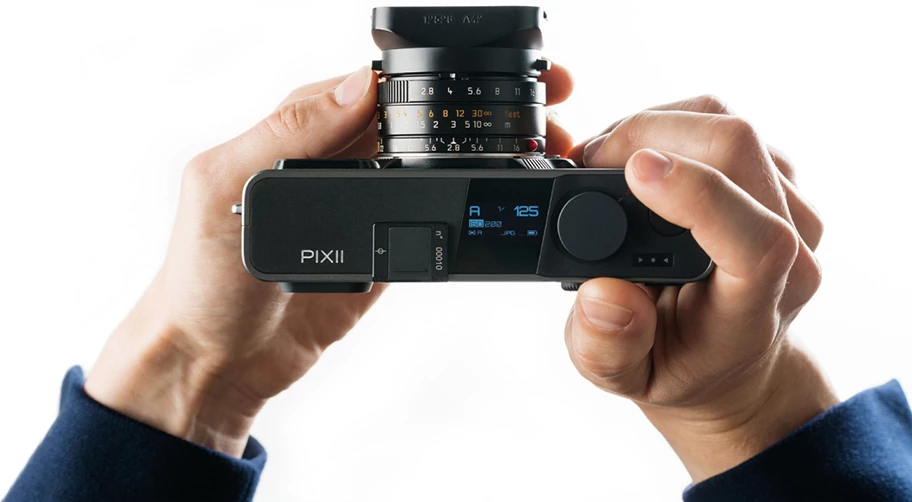Back in 2018 we reported on an interesting pocket camera that offloaded much of its functionality to the ubiquitous smartphone. Now the Pixii M-mount digital rangefinder has gone up for sale.
Most flagship smartphones, and even budget-friendly models, now sport multi-camera setups with crazy megapixel counts, but the image sensors are still quite small compared to stand-alone cameras, and attaching quality lenses can be a challenge. The 138 x 79 x 33-mm (5.4 x 3.1 x 1.3 in) Pixii camera makes use of a 12-megapixel APC-S CMOS sensor, is compatible is Leica M-mount glass and can accommodate M39/LTM lenses via an adapter.
The camera offers a very hands-on kind of photography experience, with manual focus and manual controls. Users frame a shot through the optical rangefinder, which features LED backlit framelines for standard prime lenses, and exposure and focal length indicators. Once the electronic global shutter is activated, the image data is initially stored to its internal memory – which is either 8 GB or 32 GB of solid state storage, though the launch edition shaves that down to 4 GB – and a preview is simultaneously sent to a smartphone running a companion app over Bluetooth 5.

The smartphone essentially replaces the LCD display that you might find on the back of other digital cameras, and can be used to edit, share or store the photos. It can even be used to remotely trigger the shutter release for selfies or group shots.
The machined aluminum body has an accessory shoe and tripod mount, and is home to the image sensor, a dual-core ARM system-on-chip for internal processing, 802.11n Wi-Fi and Bluetooth tech, and a 1,000-mAh battery.
The Pixii Camera is available in gray or black, with the Launch Edition coming in at €2,700 (about US$3,000). The 8-GB standard edition is priced at €2,900, we've no word on what the 32-GB model will cost.
Product page: Pixii Camera A1112







